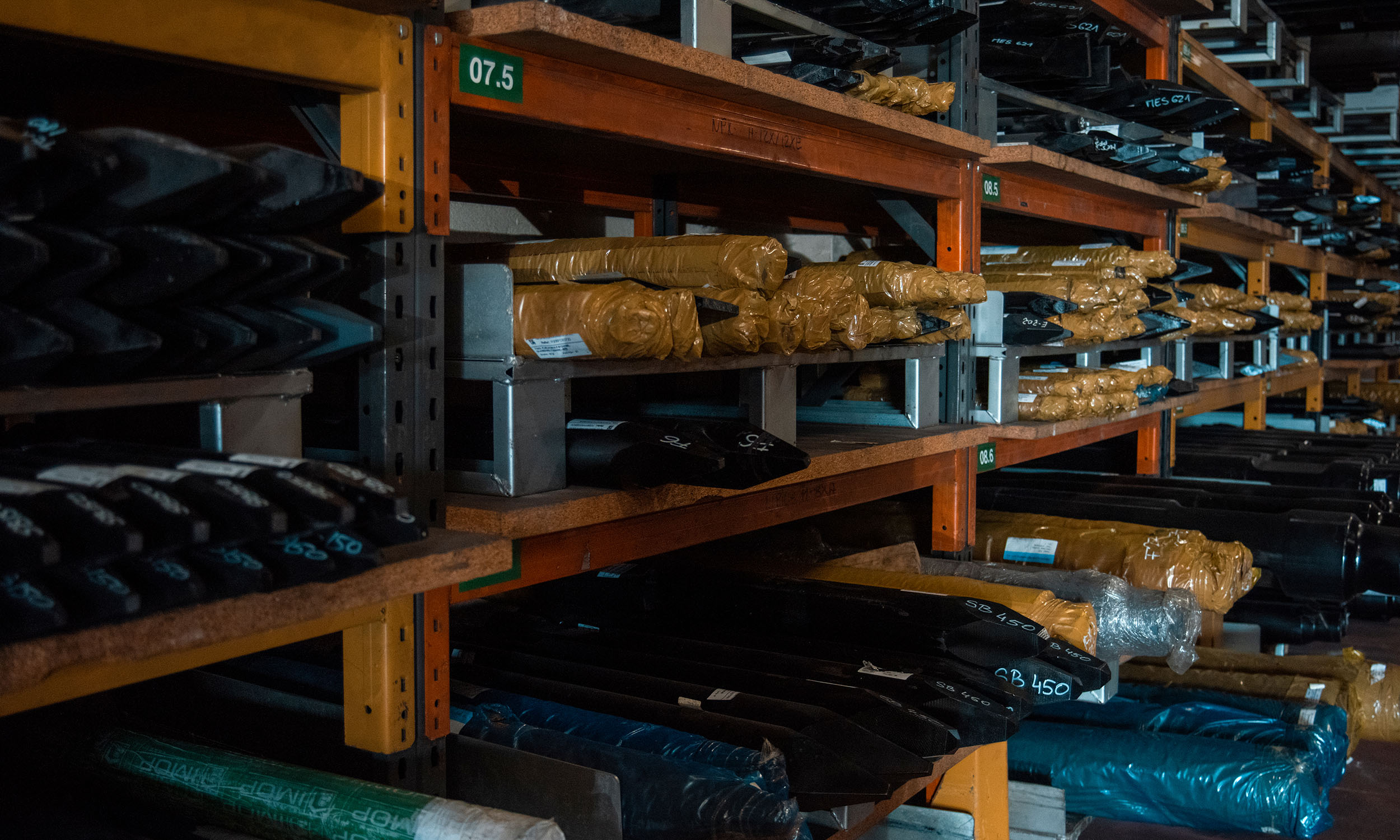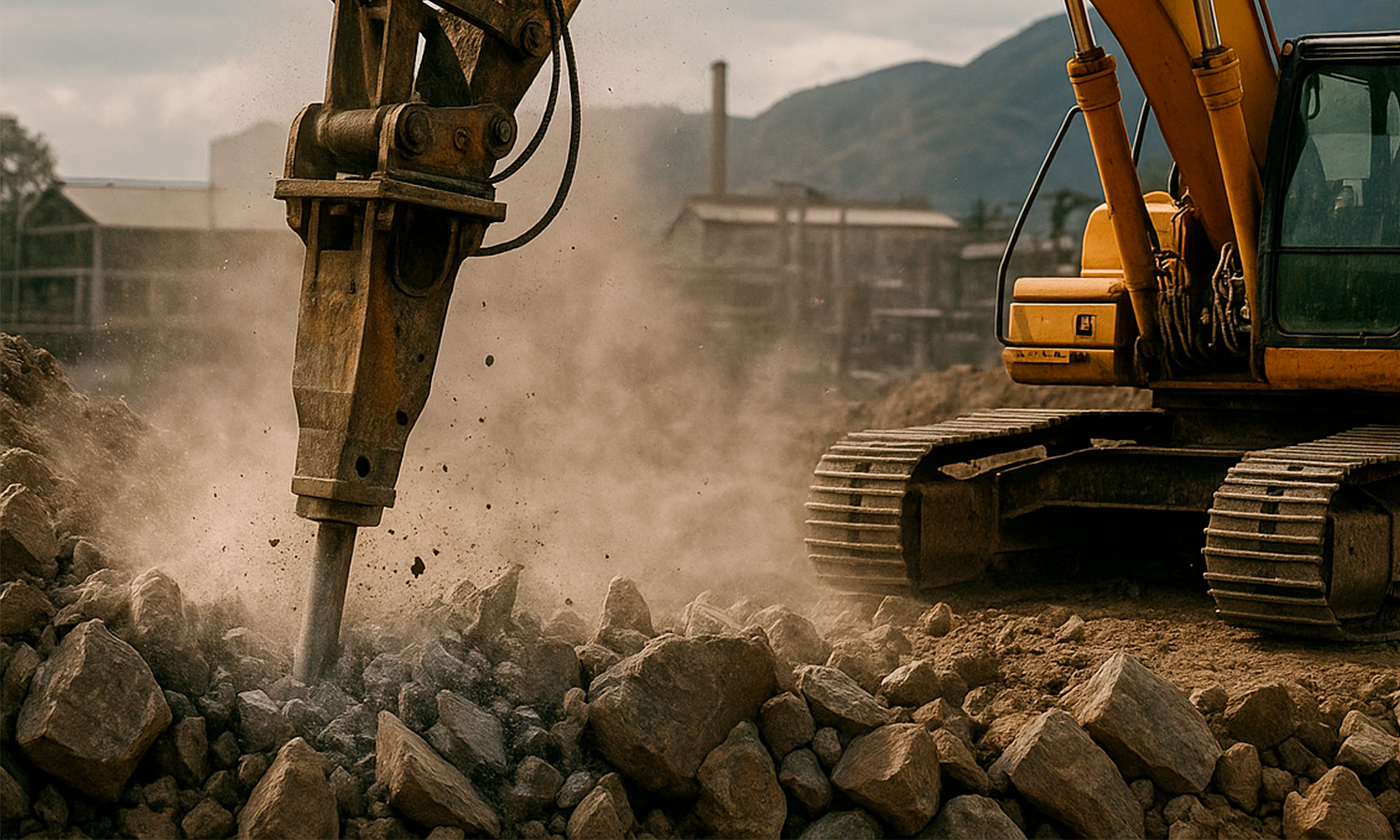The pointer for hydraulic hammers is an impact tool made of high-strength steel that attaches to the end of the machine. Its function is to transmit the force of the hammer directly to the material, allowing surfaces such as rock, concrete, or asphalt to be broken, cut, or drilled with precision and power.
Choosing the right tip for each hydraulic hammer is key to achieving efficient, fast, and safe work. Each type of tip is designed for a specific material and application. Understanding their differences helps improve hammer performance and prevents premature tool wear.
Why it is important to choose the right pointer
The striker transmits all of the hammer’s force directly to the material. Its shape and angle influence the speed, accuracy, and durability of the equipment. If an unsuitable striker is used, the hammer may overheat or become damaged over time.
Choosing the right chisel improves productivity, extends the life of the hammer, and reduces maintenance. It also optimizes impact energy, preventing unnecessary vibrations and ensuring proper operation of the assembly.
Types of hydraulic pointers and their characteristics
In construction, the most common types of hydraulic points are conical, pyramidal, blunt or pile, and chisel. Each offers specific advantages depending on the type of work and the hardness of the material.
Tapered pointer
The conical pointer has a sharp tip that concentrates energy at a single point. It is the best pointer for hard rock or very compact materials such as granite, basalt, or
Made of heat-treated steel, it guarantees high wear resistance. Its design allows it to break extremely hard materials with precision and minimal deviation.
Pyramidal pointer
This tip has a four-sided shape, which distributes energy more evenly. It is the most versatile and offers a good balance between power and control.
It works very well on medium or fractured rock, where natural cracks are exploited to facilitate breaking. It is perfect for demolition work, excavations, or general-purpose hydraulic hammer work.
The difference between the conical and pyramidal tips lies in precision: the conical tip penetrates deeper and clears the way, while the pyramidal tip offers greater control, better load distribution, and very high durability.
Blunt pointer or pestle
The blunt tip or pile driver has a rounded tip that is not designed to penetrate, but rather to deliver powerful impacts over a wider surface area. It is used for impact work in quarries, for example to knock down blocks, rework benches, or move rock without cutting or drilling.
It is very common in rock quarries in northern Spain, such as Galicia and other quarrying areas, where large granite blocks are worked. As it does not concentrate energy as much as the conical drill, it reduces the risk of unwanted breakage in the block and distributes the force more evenly over the material.
Chisel pointer
The chisel tip, also called a flat chisel or wide chisel, has a flat tip that cuts rather than drills. It is ideal for concrete, asphalt, or flat surfaces. Its shape allows for clean, controlled cuts, preventing unwanted cracks.
Used in urban works, pipe laying, or trench digging. Some models, such as the 400 mm steel points, are compatible with SDS Plus, SDS Max, or pneumatic hammers, offering a professional finish in civil engineering and maintenance work.
 ” width=”2500″ height=”1500″>
” width=”2500″ height=”1500″>
How to choose the pointer according to the material
Before purchasing or using a pointer, it is important to consider the type of material and the type of work:
- In hard rock or granite, the conical tip offers the best penetration.
- In medium-hardness or cracked materials, the pyramid drill strikes a balance between strength and precision.
- For high-impact work in quarries, knocking down blocks, or reworking benches, the blunt end or pile driver is the most suitable option.
- For asphalt, unreinforced concrete, or flat surfaces, the chisel is the right choice.
This guide can also help you identify which tool you need depending on the environment. In quarries, the conical tip is usually used, and for controlled impact on blocks, the blunt tip or pile driver is used; in civil engineering or general demolition, the pyramidal tip is used; and for fine cutting or channel opening tasks, the chisel is used. Comparing these hydraulic tips makes it easier to choose the right tool for each type of material and job.
Hydraulic pointer maintenance
Maintenance is essential to ensure the safety and service life of the pointer. Avoid striking empty space, lubricate the coupling frequently, and check the condition of the tip. If it is deformed, replace the part to prevent damage to the hammer.
Storing the pointer in a dry place, away from moisture and impact, also helps to keep it in good condition. Proper maintenance is always more economical than repair or complete replacement.
Choosing a pointer compatible with hydraulic hammers is essential for working accurately and efficiently. At IMOP, we have high-quality pointers and

